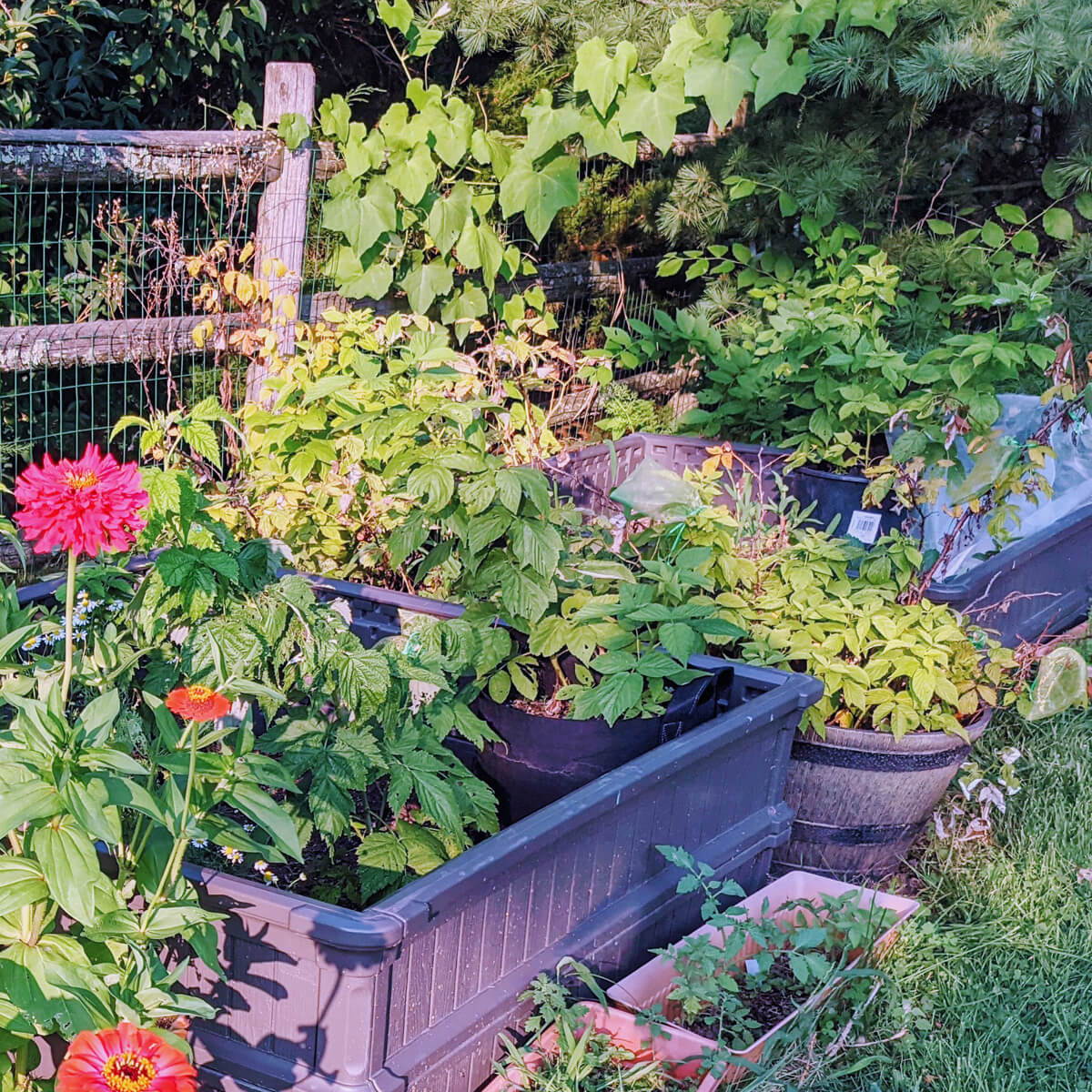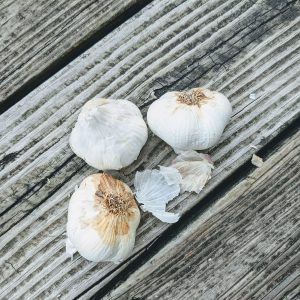Growing Raspberries in Containers: Perennial Fruit
If you didn’t already know, raspberries will grow wild and take over a space if you let them. For that reason, many gardeners go about growing raspberries in containers or raised beds.
Growing raspberry plants in containers is not difficult, especially with decent soil and adequate water and sunlight.
Follow these tips on how to grow raspberries in containers or raised beds instead of directly in the ground.

Can raspberries be grown in containers?
Yes, raspberries grow just fine in containers when their desired growing conditions are met. Raspberries won’t like to grow in standing water, so ensure proper drainage before planting raspberry brambles in containers.
What are the benefits of growing raspberries in containers?
Growing raspberries in containers offers a number of benefits, including:
- Raspberries grown in containers are just that – contained. They won’t take over your yard or other garden space unless they somehow jump ship.
- Growing raspberries in containers gives you freedom to grow anywhere. Even if you’re leasing an apartment, you can probably find a place to set a planter with a raspberry bush.
- Container-grown fruits are often easy to maintain. Raspberries in containers may not grow quite as vigorously as free roaming raspberries. You can harvest, prune, or generally care for them at the same time and place as needed.
- Raspberries in pots are movable! If you move, relocate temporarily, or regularly travel between homes, you can bring your berries with you.
What kinds of containers are good for growing raspberries?
Half-whiskey barrels or resin whiskey barrel style planters work wonderfully for growing raspberries. Growing raspberries in pots like very large, wide-mouth urns or rectangular raised beds can also work very well.
How to Grow Raspberries in Containers
It’s easy to get started growing raspberries in containers. No matter if you have a tiny postage stamp of a yard or acres upon acres, you can find a raspberry setup that works best for you.
Try these ideas for how to grow raspberries in containers:
- Choose a few good-quality raspberry plants. (We grow heritage red raspberries and Anne yellow raspberries.)
- Select containers or raised beds for your raspberries. When growing raspberries in pots, aim for containers that are at least 16 to 18 inches across and also fairly deep.
- Check for proper drainage holes in the containers if applicable. Add them if missing.
- Fill the bottom of the container with raised bed soil or other well-draining, slightly acidic soil.
- Plant the raspberry plant in the center of the container. Gently loosen the root ball first.
- Consider mixing in some mushroom soil, compost, or aged manure.
- Fill the container the rest of the way with soil. Cover the plant by about 1 to 3 inches above the roots.
- Pat the soil down to help it settle around the raspberry plant.
- Add more soil if needed.
- Top with a thin layer of mulch to help retain moisture.
- Add a tomato cage or other support system if needed.
- Water adequately but do not soak. Most raspberries need about 1-2 inches of water per week.
- Set the raspberry containers in full sun.
- Check them daily for moisture needs, pests, and general growth habits.
- Fertilize with 10-10-10 fertilizer in early spring (March) and again in about 8 weeks (May).

Tips on Growing Raspberry Plants in Pots
Try these tips if you plan on growing raspberry plants in containers.
- Choose compact varieties when possible. These lower-growing varieties may be easier to care for in containers without worrying about staking the berry canes.
- Stake if needed. Summer-bearing raspberries may need tomato cages or other supports to keep the fruit off the ground.
- Consider insect and wildlife netting to keep berries safe. Birds and bugs may eat them all up before you even get to enjoy the harvest otherwise.
- Watch raspberry pots closely for crowding. You can actually dig up raspberry suckers to create new plants!
- Monitor raspberry plants for pests. Even in containers, you may find merciless Japanese beetles and other garden pests bothering your raspberries.
- Be aware of when to expect your harvest. Summer bearing raspberries should produce in June or July while everbearing varieties should typically reward you in June and September.
- Support healthy growing conditions. Generally, raspberries prefer slightly-acidic (pH 6 – 6.2), sandy loam soil. They need full sun and adequate watering.
Raspberry Dreams
When I was a teenager, I used to pet sit for a family with horses, goats, pigs, and basically their own menagerie. One of my favorite things, besides the animals, of course, was this amazing hedgerow of fresh, red raspberries that lined their driveway.
When the family went away on vacation, I cared for their animals. Besides getting paid, they generously left me snacks, let me use their pool, and allowed me to pick raspberries from their seemingly endless supply.
All these years later, I am delighted to be growing raspberries in containers on my own property.
Sure, I wish I had acres of ground with a raspberry-lined driveway. Who wouldn’t?!
But, everybody starts somewhere and I’ll be looking forward to the day when I finally do expand my raspberry crop to grow directly in the ground.
Are you growing raspberries in containers, raised beds, or directly in the ground? Share your experience so we all can benefit!
Also, as always, feel free to ask questions and we’ll always do our best to help.
Happy Gardening!






